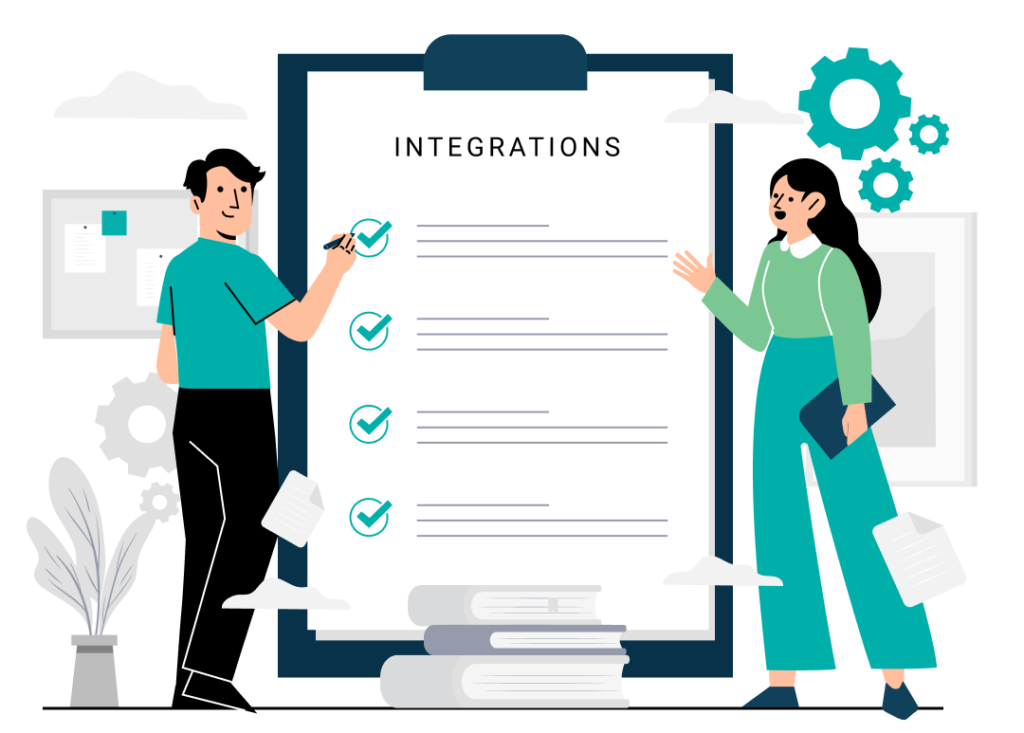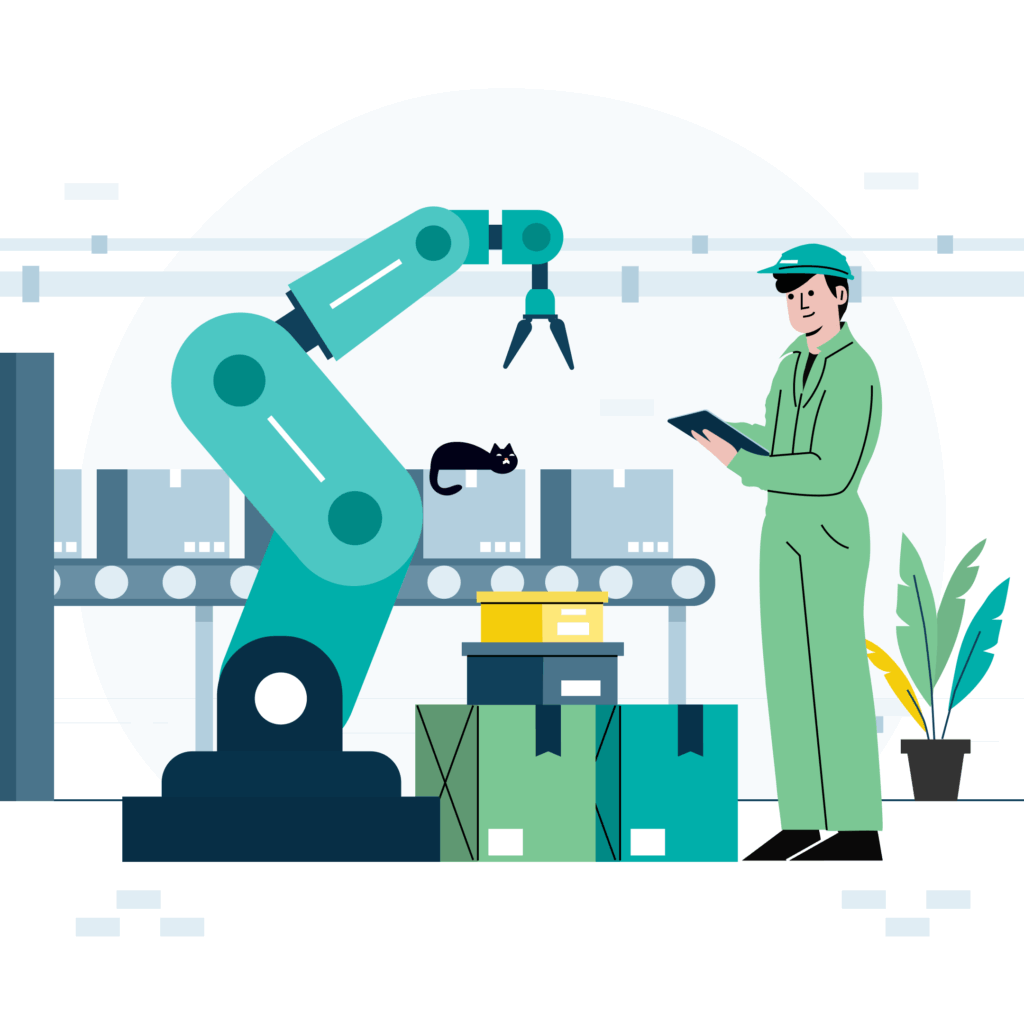95% of enterprise AI pilots fail to deliver measurable ROI. And we’re not talking about small change—businesses are pouring $30-40 billion annually into these initiatives. This isn’t random chance. It follows a predictable pattern.
The organisations that prevent these failures also measure ROI effectively. They use structured frameworks, gate criteria, and governance protocols. The organisations that fail? They skip these steps.
This article is part of our comprehensive guide to understanding AI agents and autonomous systems, where we explore the complete landscape of agent technologies and implementation strategies. Most coverage you’ll read explains the statistics but stops there. You get scary numbers without actionable prevention methodology or practical ROI measurement frameworks.
This article bridges that gap. By the end you’ll have specific checklists, measurement methodologies, and governance frameworks to significantly improve your success rate.
What causes 80% of AI projects to fail at the pilot-to-production stage?
The pilot-to-production gap is where 70-80% of documented failures happen. This is during the scaling phase, when you encounter different challenges than what you faced in the pilot.
Root causes cluster into four categories: technical integration barriers, data quality degradation at scale, organisational structure misalignment, and governance gaps.
Integration and Data Quality Challenges
Your pilot connected to one or two systems in a controlled environment. Production requires integration with multiple enterprise systems, data pipelines, and legacy applications. Only 12% of organisations have sufficient data quality for AI implementation. That’s a surprisingly low number.
Models trained on clean pilot data encounter messy real-world variations. 70-85% of AI initiatives fail due to poor data foundations, not algorithmic shortcomings. The data, not the AI, is usually the problem.
Organisational and Governance Barriers
Your pilot team was small and focused—5-10 specialists working closely together. Production requires distributed teams with mixed skill levels and compliance focus.
64% of organisations lack visibility into AI risks and 69% are concerned about AI-powered data leaks. These aren’t small concerns. They kill projects.
Organisations expect production to cost the same as the pilot. Actual costs are 3-5x higher due to integration, governance, and team restructuring.
Look at IBM Watson for Oncology—a $4 billion project that failed because it was trained on hypothetical patient scenarios, not real-world patient data. It generated treatment recommendations that were irrelevant or potentially dangerous.
How do you calculate actual ROI for an AI agent implementation?
ROI = (Total Benefits – Total Costs) ÷ Total Costs × 100. Simple formula. But it requires rigorous frameworks for both benefits and costs to provide actionable insights.
Total costs include six categories: model licensing, infrastructure, integration engineering, governance overhead, team training, and ongoing operations. Hidden costs include change management and training—often 20-30% of total costs. Integration costs are typically 30-50% of total implementation cost. These aren’t rounding errors.
Total benefits are measured through four channels: time savings (hours recovered × hourly rate), error reduction (reduced rework costs), throughput improvement (increased capacity × transaction value), and quality improvements (reduced customer issues).
You need baseline establishment before implementation. Measure current state performance so you can calculate improvement. If you don’t have a baseline, you’re guessing at benefits.
Risk adjustment is necessary. Multiply projected benefits by success probability—typically 0.6-0.8 for AI projects. Benefits realisation typically takes 6-18 months. Your ROI calculations must discount for time value.
Organisations using agentic AI platforms have achieved 333% ROI with $12.02 million net present value over three years. That’s with payback in less than six months for well-implemented projects following structured frameworks.
What are the key differences between GPT-5 and GPT-4 for enterprise AI agents?
GPT-5 improvements cluster around three agent-specific dimensions: reasoning capability for complex decision-making, reliability for consistency and error reduction, and coding for agent action execution.
GPT-5 generates more executable code, reduces error rates in system interactions, and improves tool use accuracy.
Cost difference: GPT-5 costs $1.25 per 1 million input tokens and $10 per 1 million output tokens—typically 2-3x the cost of GPT-4. Evaluate through your ROI framework: does the capability gain exceed the cost increase?
High-stakes decisions in finance, healthcare, or compliance warrant GPT-5 for improved reliability and reduced failure rates. Routine automation like data entry or scheduling may succeed with GPT-4 at lower cost.
Also consider Anthropic‘s Claude—Claude Opus 4.1 achieves 74.5% software engineering accuracy with Constitutional AI providing auditable ethical frameworks. Google Gemini‘s bundled pricing within existing Google Workspace subscriptions can dramatically reduce total cost of ownership if you’re already a customer.
How should you measure AI agent productivity gains in your organisation?
Four core KPI categories apply across industries: time savings (hours saved per transaction × hourly rate), error reduction (rework costs eliminated), throughput improvement (additional capacity × transaction value), and quality metrics (customer satisfaction, regulatory compliance).
Which ones you prioritise depends on where you’re feeling the pain. Customer service teams care most about response times and satisfaction scores. Finance teams focus on error reduction and compliance. Development teams track throughput and code quality.
Time Savings Measurement
Measure hours previously required versus hours the agent uses including review time. Self-reported time savings measured through monthly pulse surveys with 2-3 hours average, 5+ for power users as the target.
Error Reduction Tracking
Baseline error rate, post-implementation error rate, cost per error including rework, customer service impact, and compliance consequences.
Throughput Improvements
Baseline transaction volume versus post-implementation volume. Pull request throughput shows 10-25% increase for developers using AI coding assistants.
Automated measurement is preferred. System logs capture data automatically. Manual measurement requires periodic surveys which introduces bias and delays.
Usage frequency drives measurable gains. Salesforce achieved a 20% increase in Story Points completed by expanding AI tool inventory from zero to over 50 tools with best practices.
What failure prevention checklist should guide your AI agent implementation?
Organisations using frameworks report 65-94% success rates versus 20% without systematic approach. Prevention frameworks reduce failure rate to 6-35% depending on implementation quality.
Pre-Implementation Phase
Start by getting the fundamentals in place. You need requirements clarity—a clear definition of what your AI initiative will achieve. Run a feasibility assessment evaluating technical and organisational capability. Assemble your team with cross-functional composition covering all the skills you’ll need. Validate data quality with an audit of your current data infrastructure. Define success criteria with specific measurable outcomes before you start the pilot.
Technical Infrastructure Requirements
Check your internet bandwidth and make sure it’s adequate for AI tools. Set up backup connectivity for operations where downtime isn’t acceptable. Verify workstation hardware meets AI application requirements. If you’re deploying private LLMs, evaluate server capacity.
Data Management Checklist
Standardise file organisation and naming conventions across systems. Complete a data quality audit across your business systems. Identify and clean duplicate and outdated records. Assess data integration capabilities between systems.
Security and Compliance
Implement multi-factor authentication across all systems. Review and update access controls and user permissions. Establish a data classification system for sensitive information. Identify compliance requirements for your industry. Update privacy policies to address AI data processing. Configure security monitoring tools for AI implementations.
Organisational Preparation
Executive leadership needs to commit to the AI initiative and budget. This isn’t optional—projects fail without top-level support. Align AI objectives with business strategy and goals. Define success metrics and KPIs for AI implementation. Develop a change management strategy for user adoption because resistance will happen. Allocate training budget and resources for team education. Identify AI champions within each department.
Planning, Pilot, Scaling, and Post-Deployment
Planning phase covers integration architecture design, governance framework definition, monitoring system specification, risk identification, and timeline establishment.
Pilot phase includes pilot scope definition, success criteria validation, team staging and training, monitoring setup, and governance protocol testing. Your pilot should replicate production conditions at small scale—include representative production data variations, real system integrations not mocks, cross-functional team structure, full governance protocols, and realistic timelines.
Scaling phase requires data quality revalidation, integration stability confirmation, team readiness for distributed operations, governance framework operationalisation, and monitoring activation.
Post-deployment means continuous monitoring activation, productivity metric tracking, ROI measurement, governance enforcement, and optimisation planning.
Gate decisions require meeting 90%+ of predefined criteria across all dimensions before scaling to production. Failure to meet gate criteria indicates you need to halt or remediate. Following a comprehensive enterprise implementation and deployment framework prevents the execution gaps that cause otherwise promising projects to fail at scale.
How do you build a business case that justifies AI agent investment to stakeholders?
Business case structure includes investment requirements, benefit quantification, risk assessment, timeline expectations, and approval workflow with decision gates.
Investment requirements need all the cost categories: licensing, infrastructure, integration, governance, training, and operations.
Benefit quantification uses your ROI framework with specific metrics. Use data from independent research like Forrester TEI studies to validate projections.
Risk adjustment with probability weighting—70% of projected benefits is realistic. Timeline discounting for benefits realisation lag. Most AI projects take 6-18 months for benefits realisation. Overselling timelines kills stakeholder confidence.
Template sections: executive summary, opportunity statement, investment summary with detailed cost breakdown, benefits analysis with quantified value creation, risk assessment with mitigation strategies, timeline with realistic schedule, success metrics, and approval sign-offs.
AI agents typically show ROI advantage at 3-5 year horizon for organisations with skilled teams. Traditional automation delivers faster initial value but hits scaling limitations.
What governance framework enables AI agent reliability and prevents security failures?
Enterprise AI governance comprises four pillars: testing and validation, continuous monitoring and alerting, Non-Human Identity security management, and incident response and rollback.
Governance overhead is typically 15-25% of implementation costs but prevents 60-74% of failures. That’s a solid return on investment. Understanding agentic security frameworks directly enables this prevention—what appears expensive upfront delivers massive risk mitigation that protects your ROI investment.
Testing includes unit testing for individual agent functions, integration testing for agent with systems, edge case testing for unusual inputs, and load testing for performance at scale.
Code review standards for AI-generated code must adapt to become security-conscious checkpoints. AI can reproduce patterns susceptible to SQL injection, XSS, or insecure deserialisation.
Continuous monitoring tracks agent decisions, error rates, performance drift, cost per transaction, and business metric impact. Visual dashboards provide real-time updates. Implement overall health scores using intuitive metrics. Employ automatic detection for bias, drift, performance, and anomalies.
Early warnings: error rate trending upward, cost per transaction exceeding baseline, accuracy drift below 90% of pilot performance, agent decision rejection rate above 15%, and customer satisfaction declining.
Non-Human Identity security differs from traditional system security. Autonomous agents require authentication framework, authorisation levels, action logging, audit trails, and breach prevention.
Data stewardship responsibilities scattered across teams lead to governance gaps. Assign dedicated data stewards for each AI project. Establish centralised governance committee with cross-functional representation.
Incident response includes rapid detection of agent failures, human override capability, rollback procedures, root cause analysis, and prevention implementation. Deploy behind feature flags with shadow traffic for rollback capability.
AI algorithms lack explicit design, making decision-making opaque. Implement explainability tools, model documentation standards, and algorithmic impact assessments.
FAQ Section
Why do organisations fail to realise ROI from AI agents even after successful pilots?
Timeline misalignment and governance gaps. Pilots operate under ideal conditions with focused teams. Production encounters data variations, system integration complexity, and distributed team execution. Without realistic timeline expectations—6-18 months for benefits realisation—and governance frameworks, organisations abandon projects before value materialises.
Many failures also stem from agent washing—where vendors claim genuine autonomy but deliver sophisticated automation. This gap between expectations (set by marketing claims) and reality (rules-based automation without true decision-making) leads to disappointing results that undermine ROI.
How do you estimate integration costs for AI agent implementation?
Integration costs cluster into three categories: system inventory identifying all systems needing connection, data pipeline architecture designing connectivity, and engineering effort implementing and testing. Typical range is 30-50% of total implementation cost. Underestimating integration costs is the cost accounting error that causes most projects to fail budget gates.
Should we choose GPT-5 or GPT-4 for our enterprise AI agent?
High-stakes decisions in financial transactions, healthcare, or compliance warrant GPT-5 for improved reliability. Routine automation may succeed with GPT-4 at lower cost. Evaluate through your ROI framework: does improved reliability offset the 2-3x cost premium? Use a phased pilot approach to compare models directly.
When making this decision, avoid common platform selection mistakes that lead to implementation failure. Model choice must align with your orchestration platform capabilities, vendor lock-in constraints, and long-term scalability requirements—not just immediate cost comparisons.
What’s the difference between AI project failure rate statistics and preventable failures?
The 80-95% failure rate represents historical statistics from organisations without structured prevention frameworks. Organisations implementing systematic methodologies report 65-94% success rates. Prevention frameworks reduce failure rate to 6-35% depending on implementation quality.
How do you measure success during the pilot phase to determine scaling readiness?
Success criteria must be defined before the pilot starts. Criteria should address technical performance, business value through measured productivity improvement against baseline, governance validation, and team readiness. Gate decisions require meeting 90%+ of predefined criteria across all dimensions before scaling.
What team composition prevents AI agent implementation failure?
Success requires cross-functional teams: business stakeholder for requirements and value tracking, technical architect for system design, AI specialist for model selection, governance specialist for testing protocols, and operations engineer for monitoring. Single-function teams lack perspectives needed for production readiness.
How do you account for the risk that AI improvements won’t materialise as projected?
Build risk adjustment into ROI calculations. Multiply projected benefits by success probability—typically 0.6-0.8 for AI projects. Implement phased rollout with gate decisions. Track actual metrics against projections. Conservative probability weighting of 60-70% builds stakeholder confidence by creating upside scenarios.
What’s the correct approach to pilot scope to prevent pilot-to-production failures?
The pilot should replicate production conditions at small scale. Include representative production data variations, system integrations with real systems not mocks, cross-functional team structure, full governance protocols, and realistic timelines. Pilots optimised for quick success often fail at scale.
How do you choose between building AI agents versus upgrading traditional automation platforms?
Consider flexibility where agents adapt to changes without code while RPA requires code changes, scaling costs where agents scale software cost while RPA scales licensing, team requirements, and time to value. AI agents typically show ROI advantage at 3-5 year horizon. Traditional automation delivers faster initial value but hits scaling limitations.
What monitoring metrics indicate that an AI agent deployment is failing and needs intervention?
Early warnings include error rate trending upward, cost per transaction exceeding baseline, accuracy drift below 90% of pilot performance, agent decision rejection rate above 15%, and customer satisfaction declining. Your continuous monitoring system should generate alerts when metrics cross thresholds.
How do you prevent “agent washing” where vendors claim AI capability but deliver rules-based automation?
Use an evaluation framework: request autonomy demonstration watching the agent make decisions without human-defined rules, ask for decision logging, demand governance capability assessment, require pilot testing, and verify model claims. True agents show learning capability, edge case handling, and autonomous decision-making. Rules-based automation shows fixed logic.
This aligns directly with the fundamental distinctions between genuine agents and automation that underpin ROI success. Projects built on vendor claims rather than verified autonomy consistently deliver disappointing returns.












